- echinodermata means "spiny skin"
- these animals have calcareous spines, bumps or plates in their body wall
General information
- include the sea stars, sea urchins (tengeri sün), sand dollars, brittle stars, sea cucumbers and sea lilies
- all are marine
- live on the bottom
- slow-moving or sessile
!!! deuterostomes!!!!! (újszájúak) - this means that their mouth was the second hole to form, or in other words, the anus developed from the blastopore and the hole that develops into the mouth developed from a second opening. All the animals that we will discuss from this point on are deuterostomes.
Body structure
- have secondary radial symmetry (body parts arrange as rays): this means that their larva has bilateral symmetry and the adult form has radial symmetry. Theirs is a symmetry of 5, so they have 5, 10, 15, etc arms
- thin epidermis (felhám)
- spines stick through epidermis
- no head, only dorsal (upper) and ventral (lower) surfaces
- central disc
- 5 or more rays (arms) joined to disc
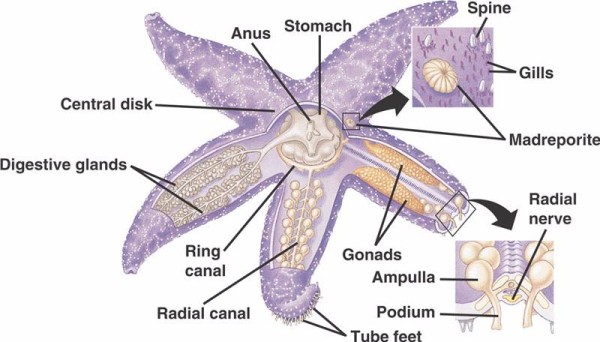 |
- nervous system: nerve ring around their mouth, cords extend down the arms, light-senstive eyespots at end of each arm
 |
- digestive system: mouth is found on the ventral surface in the middle of the central disc. The stomach is pushed out of the mouth and spread over the food. Enzymes (from digestive glands) are released onto the food to liquify it and make it easy to take in (external digestion)
- reproductive system: echinoderms reproduce sexually, sexes are usually separate, although there are some hermaphroditic species. Sperm and eggs are released into water (external fertilization). Fertilized egg develops into larva, which after a few weeks metamorphoses into the adult form.
Classification
Sea stars: Range in size from 1-65 cm in diameter. They are predators. Some species are capable of regenerating body parts.

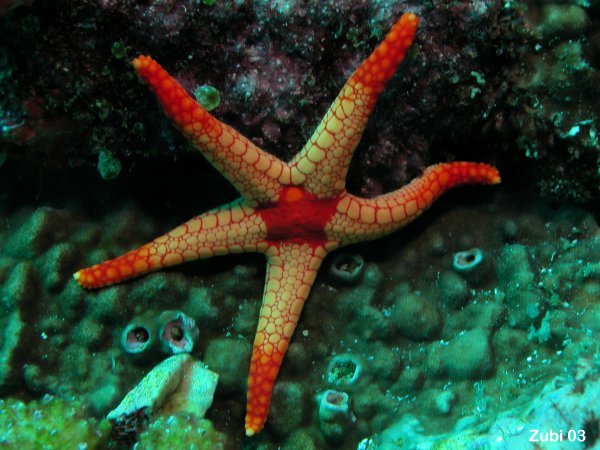
Sea urchins: herbivores (especially kelp)



Sea lilies and sea cucumbers are detritus-eaters. Sea cucumbers have a reduced endoskeleton (spines/plates) and their symmetry has "rotated" although on their bottom they still have 5 rows of tube feet running from mouth to anus.
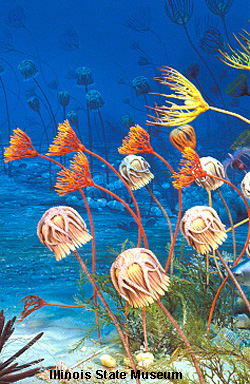
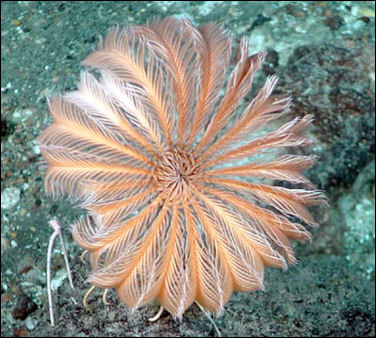
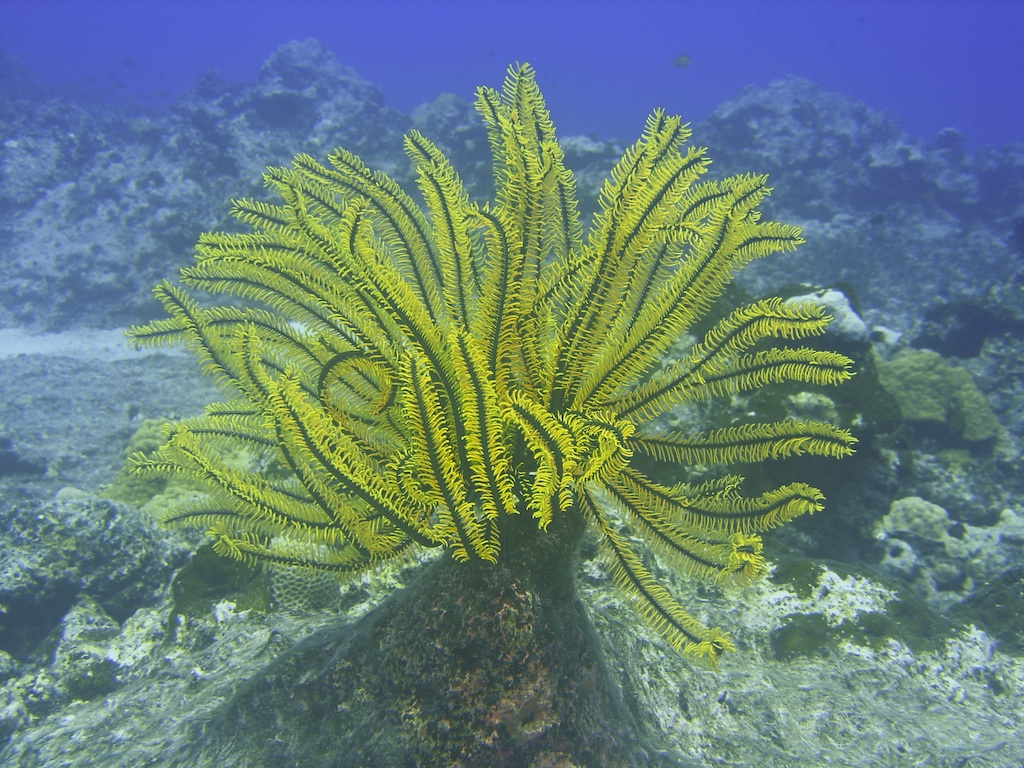
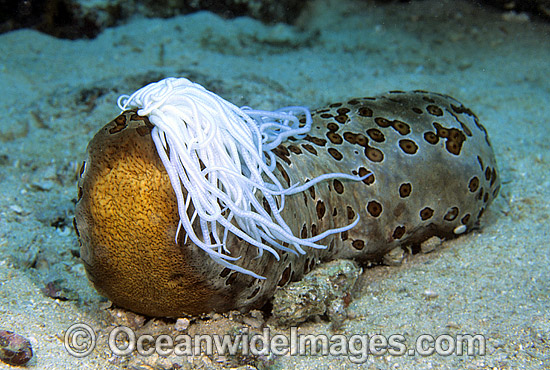




Origin
- don't really know who their evolutionary ancestors were, possibly an extinct bilateral swimmer, like their larva
- closest invertebrates to the chordates (gerincesek) - both deuterostomes, both have internal skeletons
- they are considered a dead-end phylum
No comments:
Post a Comment